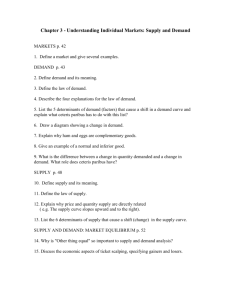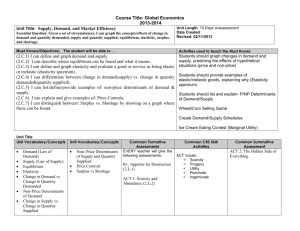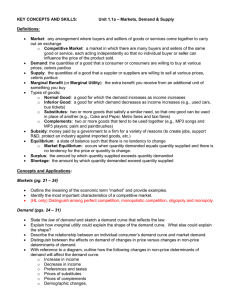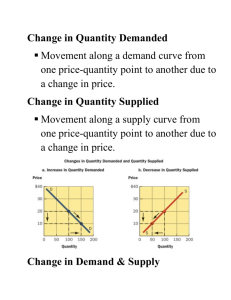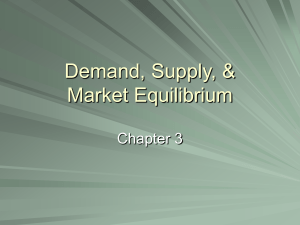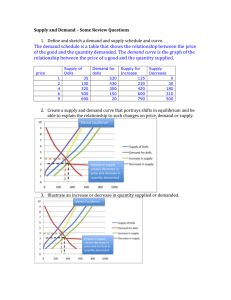Chapter 3: Understanding Individual Markets: Demand and Supply
advertisement
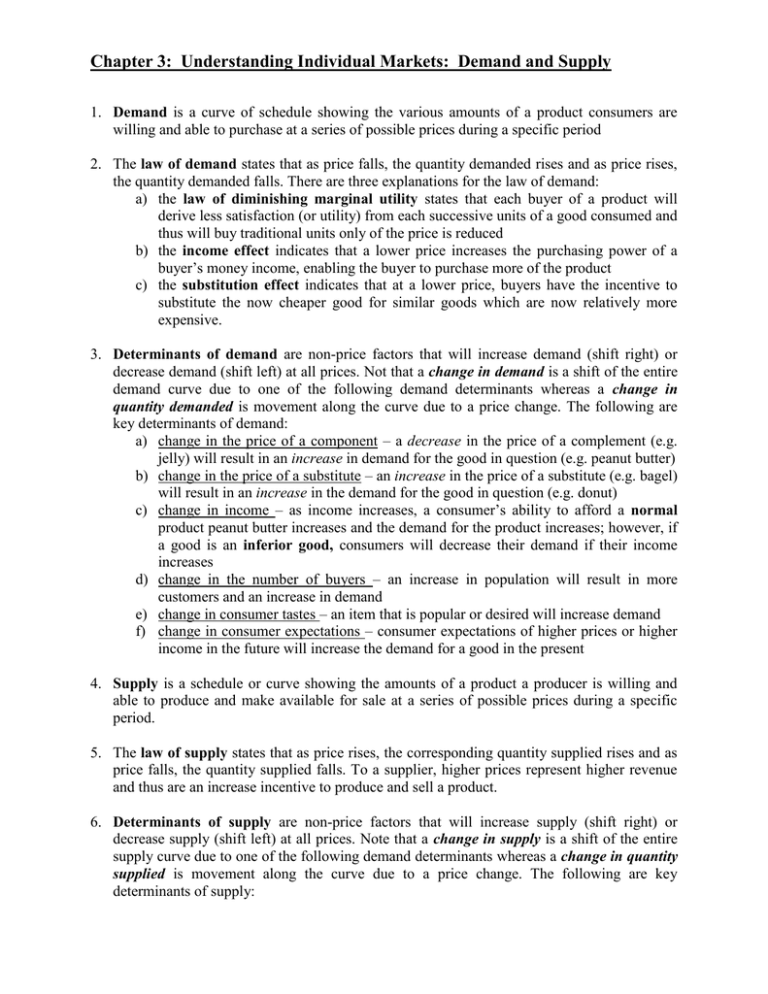
Chapter 3: Understanding Individual Markets: Demand and Supply 1. Demand is a curve of schedule showing the various amounts of a product consumers are willing and able to purchase at a series of possible prices during a specific period 2. The law of demand states that as price falls, the quantity demanded rises and as price rises, the quantity demanded falls. There are three explanations for the law of demand: a) the law of diminishing marginal utility states that each buyer of a product will derive less satisfaction (or utility) from each successive units of a good consumed and thus will buy traditional units only of the price is reduced b) the income effect indicates that a lower price increases the purchasing power of a buyer’s money income, enabling the buyer to purchase more of the product c) the substitution effect indicates that at a lower price, buyers have the incentive to substitute the now cheaper good for similar goods which are now relatively more expensive. 3. Determinants of demand are non-price factors that will increase demand (shift right) or decrease demand (shift left) at all prices. Not that a change in demand is a shift of the entire demand curve due to one of the following demand determinants whereas a change in quantity demanded is movement along the curve due to a price change. The following are key determinants of demand: a) change in the price of a component – a decrease in the price of a complement (e.g. jelly) will result in an increase in demand for the good in question (e.g. peanut butter) b) change in the price of a substitute – an increase in the price of a substitute (e.g. bagel) will result in an increase in the demand for the good in question (e.g. donut) c) change in income – as income increases, a consumer’s ability to afford a normal product peanut butter increases and the demand for the product increases; however, if a good is an inferior good, consumers will decrease their demand if their income increases d) change in the number of buyers – an increase in population will result in more customers and an increase in demand e) change in consumer tastes – an item that is popular or desired will increase demand f) change in consumer expectations – consumer expectations of higher prices or higher income in the future will increase the demand for a good in the present 4. Supply is a schedule or curve showing the amounts of a product a producer is willing and able to produce and make available for sale at a series of possible prices during a specific period. 5. The law of supply states that as price rises, the corresponding quantity supplied rises and as price falls, the quantity supplied falls. To a supplier, higher prices represent higher revenue and thus are an increase incentive to produce and sell a product. 6. Determinants of supply are non-price factors that will increase supply (shift right) or decrease supply (shift left) at all prices. Note that a change in supply is a shift of the entire supply curve due to one of the following demand determinants whereas a change in quantity supplied is movement along the curve due to a price change. The following are key determinants of supply: a) resource prices – lower resource prices (labor, capital, land) decrease production costs, increase profits, and increase supply at each product price b) technology – improvements in technology decrease production costs, increase profits, and increase supply at each product price c) taxes and subsidies – whereas taxes will raise production costs, decrease profits, and decrease supply at each product price, subsidies will have the opposite effect (see a/b above) d) number of sellers – an increase in the number of suppliers will increase market supply f) change in producer expectations – producer expectations of higher demand for product in the future will increase the supply for a good in the present 7. The market-clearing or equilibrium price occurs where the quantity demanded is equal to the quantity supplied. At any price above equilibrium, a surplus will occur, as the quantity supplied is greater than the quantity demanded and at any price below equilibrium, a shortage will occur as the quantity demanded is greater than the quantity supplied. 8. Changes in supply and demand will result in a new equilibrium price and output.





